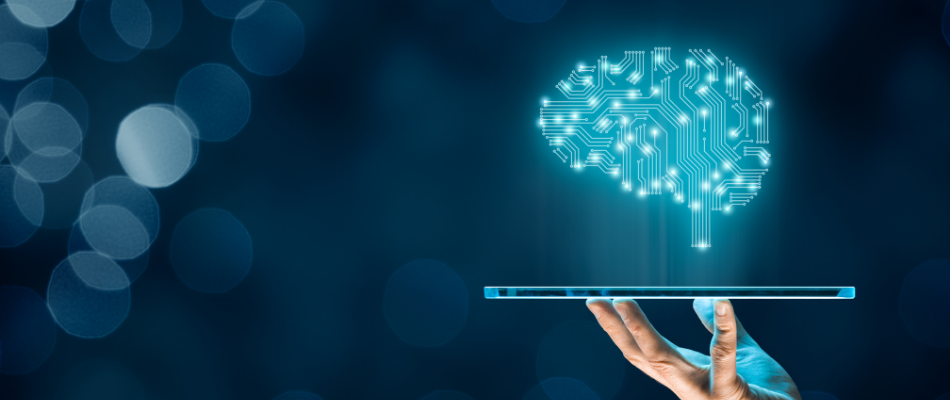Right now, Artificial intelligence (AI) and Machine Learning (ML) are transforming the world of business and commerce as we know it. We cannot escape this inevitable change. AI and ML are disrupting industries and organisations as you read this. All of us should understand the basics of this fast-evolving field and consider the implications for our own lives, our careers and the organisations where we work. The International Leadership Development Programme from Regenesys Business School recognises this crucial opportunity for businesses and their leaders, and an intensive insight into the worlds of AI and ML from a bases for sounds leadership training through the programme.
In this, one of a series of articles on the subject, we look at AI and ML concepts as a whole, and as an effective means that may be employed by leaders and future leaders to enhance, develop, streamline and grow their businesses, right up to an international scale, through the International Leadership Development Programme from Regenesys Business School.
AI AND ML CONCEPTS
Let’s explore some AI and ML concepts:
Neural Networks
Neural networks are sets of algorithms, modelled loosely after the human brain, that are designed to recognise patterns. They interpret sensory data through a kind of machine perception and gene , label or cluster raw input. The patterns they recognise are numerical, contained in vectors, into which all real-world data, be it images, sound, text or time series, must be translated.
Neural networks help us cluster and classify data. You can think of them as a clustering and classification layer on top of the data you store and manage. They help to group unlabelled data according to similarities among the example inputs, and they classify data when they have a labelled dataset to train on. The neural network decides what the similarities and the differences are.
Each step in a neural network involves a number of guesses. A weight is a factor that either increases or decreases the significance of data inputs in machine learning, and thus speeds up the learning. But if the weight is not accurate or is set at too high or too low a setting, it will have dramatic influences on the final outcome.
In this context, bias to refer to computer systems that systematically and unfairly discriminate against certain individuals or groups of individuals in favour of others. Depending on how the algorithms and weights are set up, the system may have a bias for or against a certain outcome. This is relevant when tracking fraud or systems for awarding loans; people may be penalised or rewarded unfairly. There is a strong ethical component to the role of weights in neural networks, because they operate without human intervention.
Visualisation
A convolutional neural network recognises and classifies images. The algorithm guides the computer in this process. Images and pictures are particularly difficult for a computer. You and I will look at a picture and see a tree, a cow and a house. The computer sees a flat array of pixels. The computer has no sense of depth or perspective. In order for convolutional neural networks to interpret the flat pixel image, the computer compares the image with a very large set of image libraries. It goes back and forth between the libraries and the image. Hence the term convolutional. The algorithms initially look for and compare looking simple features such as edges and curves, and then build up to ‘see’ more abstract and complex concepts. When completed, the computer ‘sees’ the house or the cow as you and I would identify it.
This is called visualisation. It brings a visual dimension (2 or 3D) to an object that is described in non-visual data. Visualisation allows an object to been “seen” without physically being there, with the help of these algorithms and convolutional neural networks.
Deep Learning
Deep learning is related to this. It’s a type of machine learning where artificial neural networks learn from large amounts of data. They do this by themselves once the algorithms and neural networks are set up. In other words, the ‘machine’ can go ahead (provided it has enough data or images) and solve complex problems by itself. That is super cool!
At its simplest, deep learning can be thought of as a way to automate predictive analytics. While traditional machine learning algorithms are linear, deep learning algorithms are stacked in a hierarchy of increasing complexity and abstraction.
Applications in practice
A chatbot is an artificial intelligence (AI) software that can simulate a conversation with a human being in natural language through messaging applications, websites, mobile apps or through the telephone. A chatbot is often described as one of the most advanced and promising expressions of interaction between humans and machines.
Machine learning is being transforming advertising. Programmatic advertising is the automated process of buying and selling advertisements through an exchange, connecting advertisers to publishers. Programmatic advertising uses machine learning technology to improve efficiency and make better budget decisions for advertisers.
Real-time bidding is one of those techniques. It refers to the buying and selling of online ad impressions through real-time auctions that occur in the time it takes a webpage to load. As the ad impression loads in the user’s browser, information about the page and the user is passed to an ad exchange, which auctions it off to the advertiser willing to pay the highest price for it. The winning bidder’s ad is then loaded into the webpage nearly instantly; the whole process takes just milliseconds to complete.
Another technique is a recommendation engine. It is a system that suggests products, services, information to users based on analysis of their data. The recommendation is based on factors such as the history of the user and the behaviour of similar users.
COMMON APPLICATIONS
Here are some common applications which use AI and ML:
Automatic language translation:
Machine learning can convert text in one language into another. It can also assist with pronunciation.
Email spam and malware filtering
Machine learning algorithms used for email spam filtering and malware detection.
Image Recognition:
Image recognition is a common application of machine learning. It is used to identify objects, persons, places, digital images, etc. The best example is the Facebook automatic friend tagging suggestion.
Medical diagnosis
Machine learning is used to quickly and accurately diagnose disease. As a result, medical technology is underdoing revolutionary change.
Online fraud detection
Machine learning is very effective in detecting fraudulent transactions. The algorithm makes our online transactions more secure by detecting aberrant transactions.
Product recommendations
Machine learning is used by e-commerce and entertainment companies such as Amazon and Netflix, to recommend products to the user. Our previous search histories are used to come up with a set of recommendations.
Self-driving cars
The application of ML in self-driving cars is still in its infancy. Machine learning plays a significant role in self-driving cars. Unsupervised learning is used to train the car control systems to detect people and objects while driving.
Share market trading
Machine learning is used extensively in share market trading. The ML neural network is used to predict share market trends.
Speech Recognition
Speech recognition converts voice instructions into text, and it is also known as “speech to text.“ Examples are Google Assistant, Siri, Cortana and Alexa.
Traffic prediction
If we have a smart phone, we are familiar with apps like Google Maps and Waze. They work out the shortest route and predict the traffic conditions along the way.
Virtual personal assistant
Virtual personal assistants such as Google assistant, Alexa, Cortana, and Siri help us to find information using our voice instruction.
https://www.javatpoint.com/applications-of-machine-learning
Each industrial revolution has brought with it new ways of how we work and what we produce. The 4IR, the one we are living through now, is unmatched because of the sheer acceleration of change. Artificial intelligence and machine learning are driving this acceleration.
IMPLICATIONS OF AI AND ML
What are the implications of AI and ML?
More and more jobs will become automated. Jobs that require repetitive action, or quickly sourcing and interpreting data will be automated. To find out how automation will impact jobs, click here: https://www.pwc.co.uk/services/economics/insights/the-impact-of-automation-on-jobs.html
The way we work will also change. Because boring reportative work is automated, our roles in jobs will change. We will have to be more creative and people-oriented. There will be a greater demand for problem-solving, empathy, listening, communication, interpretation, and collaboration. – those skills where humans are better than machines. In other words, the jobs of the future will focus more and more on the human element and soft skills
This is how Deloitte sees new categories of work emerging: https://www2.deloitte.com/us/en/insights/focus/human-capital-trends/2019/impact-of-ai-turning-jobs-into-superjobs.html Deloitte sees the emergence of superjobs. These new types of jobs, combine into one, roles which up to now have been largely separate: manager, designer, architect, and analyst. These are roles that combine work and responsibilities from multiple traditional jobs, where technology is used to both augment and widen the scope of the work, involving a more complex combination of technical and human skills.
Dramatic changes in how the workplace functions are under way. More and more people are working from home. Robots and cobots are no longer strange. Tools will support meetings and flag work processes that are falling behind. Then psychological contract of employment is reshaping before our eyes.
AI and ML are going to change our lives without doubt – the process has already begun. A number of big tech giants including Google, IBM, Microsoft, Facebook and Amazon, created the Partnership on AI to research and advocate for ethical implementations of AI, and to set guidelines for future research and deployment of robots and AI. Find out more about the partnership on AI, click here https://www.partnershiponai.org
WHAT NEXT FOR ME?
If you want to make a career out of AI, you will need some fundamental knowledge of a computer language such as C, C++, Java, Python, etc. You will also requires competency in mathematical concepts such as derivatives and probability theory.
On the other hand, you may want to understand more about AI and Ml. You want to be able to manage people who work in AI and ML, and you want to be able to hold your own in meetings about AI and ML. You want to actively be part of the 4IR and just be a bystander.
Regenesys has a range of digital courses courses, at the Basic and Advanced level that will have you talking like a pro in no time at all. The basic concepts and process are explained, step by step. And the beauty of it is that it is all online. You need never leave the comfort of your home or your office. With a Regenesys Certificate, you will put yourself ahead of the pack.
The International Leadership Development Programme (ILDP) from Regenesys Business School comprises of a world-class, innovative, and disruptive curriculum that develops leadership competencies for the new digital world.
The intense programme explores cutting-edge knowledge, global trends and best practice in digital transformation, entrepreneurship, strategy, and innovation from the fastest-growing companies in the USA.
Participants are exposed to applied learning using innovative learning techniques, master classes, exposure to giants of industry, focused networking opportunities and commercial
matching to sector-level opportunities. The programme is facilitated by global faculty comprising experts in specialised fields as well as top business leaders.








